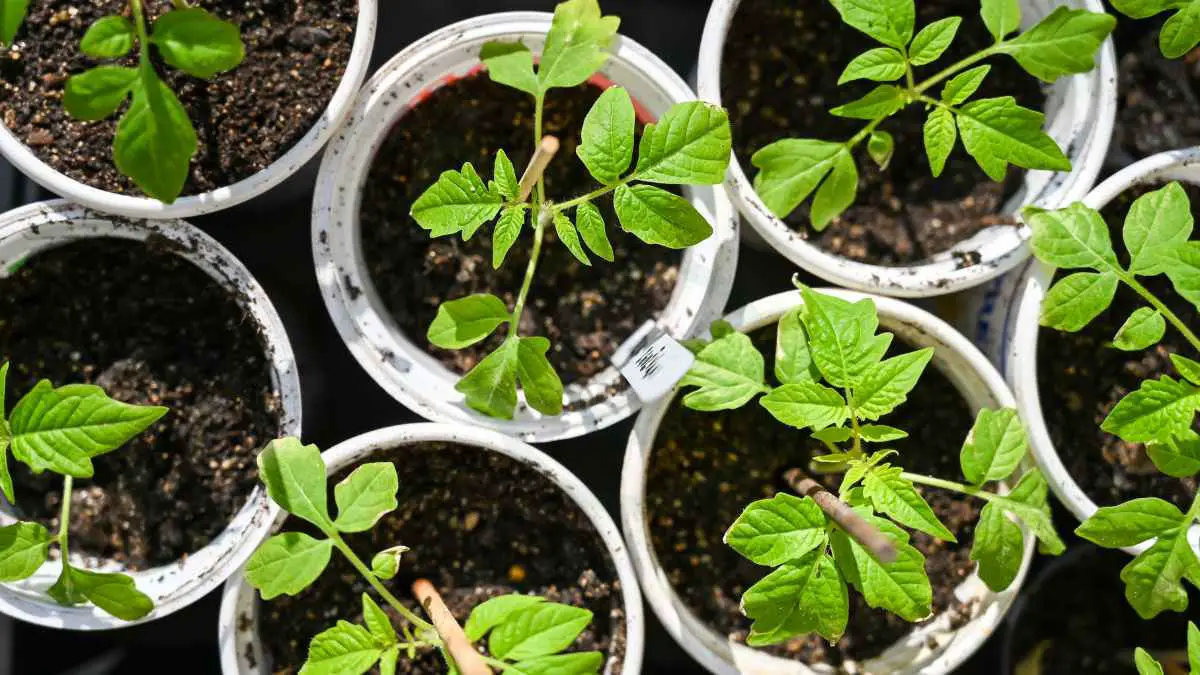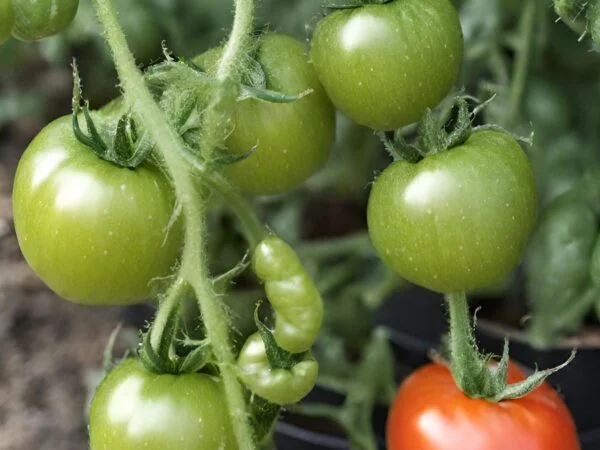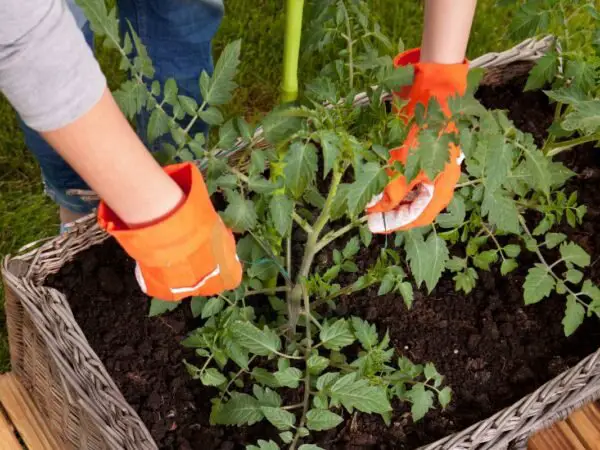Selecting tomato stands can be a daunting task, but fear not! With our expert guidance, you'll confidently navigate through the options and find the perfect stand for your needs.
When choosing tomato stands, consider factors like material, size, and design. Metal stands are durable and weather-resistant, while wooden stands offer a rustic charm. Determine the size based on the number of tomato plants you have and the space available in your garden. Additionally, opt for designs that provide adequate support for the plants as they grow, such as cage-style or trellis stands. By carefully evaluating these factors, you'll ensure successful tomato cultivation.
Ready to take your tomato gardening to the next level? Stay tuned for more insightful tips on maximizing yield, preventing pests, and nurturing healthy plants for a bountiful harvest!
Key Takeaways
- Understand the needs of tomato plants to provide appropriate support for optimal growth.
- Select stands that match the size and growth habits of your tomato plants to ensure effective support.
- Utilize tomato cages to offer structured support and prevent sprawling of the plants.
- Customize support structures based on the specific requirements of different tomato plant varieties.
- Implement anchoring techniques such as tying or staking to secure tomato plants and promote upward growth.
- Maximize growth potential by providing adequate support and monitoring plant development closely.
Understanding Tomato Plants
Plant Types
Determinate
Determinate tomato plants have a fixed height and produce fruit within a short period. They stop growing once reaching a specific size, making them ideal for compact spaces. These plants are perfect for container gardening due to their limited growth. Stands for determinate tomato plants provide stable support, preventing the plant from toppling over as it matures.
Indeterminate
Indeterminate tomato plants continue to grow throughout the season and produce fruit until frost hits. They require sturdy support to accommodate their continuous growth. Compared to determinate varieties, indeterminate plants yield more fruit but need regular pruning and maintenance. Stands play a crucial role in ensuring these plants stay upright and healthy.
Growth Patterns
Climbing
Climbing tomato plants grow vertically, requiring structures like trellises or cages for support. Using stands for climbing tomatoes promotes better air circulation, reducing the risk of diseases like blight. When selecting stands for climbing tomato plants, opt for tall structures with ample space between tiers to allow vines to climb easily.
Bushy
Bushy tomato plants have a compact growth habit, spreading out rather than growing upwards. Supporting bushy tomato plants can be challenging due to their sprawling nature and heavy foliage. To provide adequate support, consider using cage-like stands that surround the plant. These designs offer 360-degree support, keeping the plant upright and preventing breakage of branches laden with fruit.
Selecting Stands
Material Considerations
Selecting the right material for tomato plant stands is crucial. Common materials include wood, metal, and plastic. Wooden stands offer a natural look but require more maintenance compared to metal or plastic options. Metal stands are durable but may rust over time. Plastic stands are lightweight and easy to clean, making them a low-maintenance choice.
When choosing stand materials, consider durability and maintenance requirements. Wood stands may need regular sealing or painting to prevent rotting. Metal stands should be treated to avoid rusting in humid conditions. Plastic stands are resistant to water damage but may fade under prolonged sun exposure.
For long-lasting tomato plant stands, opt for durable materials like treated wood or powder-coated metal. These materials withstand outdoor conditions better and require minimal upkeep compared to untreated wood or regular metal.
Size and Shape
The size and shape of tomato plant stands impact plant growth and support. Ensure that the stand's dimensions align with the plant's growth potential. Taller plants need taller stands for proper support, while bushy varieties thrive on wider platforms.
Consider the height and width of the stand when selecting one for your tomato plants. Tall varieties benefit from taller stakes or cages to prevent bending under fruit weight. Bushy plants spread outwards, requiring broader bases for stability.
Choosing the right size and shape ensures optimal airflow around the plants, reducing the risk of diseases like mold or mildew. Proper spacing between plants prevents overcrowding and promotes healthy growth.
Stand Durability
Stand durability is essential for ensuring long-term use and plant support. Opt for sturdy materials that can withstand outdoor elements without deteriorating quickly. Metal stands are known for their strength but may require occasional maintenance to prevent corrosion.
To enhance stand durability, regularly inspect for any signs of wear or damage such as rust spots or cracks in the material. Clean the stands periodically to remove dirt buildup that can weaken their structure over time.
Investing in high-quality, durable tomato plant stands saves you time and effort in replacing them frequently due to damage or wear. Proper maintenance routines prolong the lifespan of your stands, providing reliable support for your growing tomato plants.
Tomato Cages Overview
Popular Types
When it comes to tomato cages, there are various popular types available in the market. The cylindrical wire cages are a common choice, known for their durability and sturdiness. Another popular type is the foldable cone cages, which provide flexibility and easy storage options. Gardeners also opt for stackable square cages, offering a modern look and efficient space utilization.
These different types of tomato cages come with unique features and benefits. The cylindrical wire cages offer excellent support for tomato plants throughout their growth stages. On the other hand, the foldable cone cages can be adjusted as per plant growth, ensuring proper support at all times. Gardeners appreciate the versatility of the stackable square cages, allowing them to customize the setup based on their garden layout.
In terms of popularity and user reviews, each type of tomato cage has its own following. While some gardeners swear by the stability of cylindrical wire cages, others prefer the convenience of foldable cone cages or the sleek design of stackable square cages. User reviews often highlight factors like ease of assembly, durability, and overall effectiveness in supporting tomato plants.
Cage Benefits
Using cages as stands for tomato plants offers several benefits that contribute to successful gardening. These structures provide crucial support to growing tomato vines, preventing them from bending or breaking under the weight of fruit. cages help maintain proper plant alignment, ensuring optimal exposure to sunlight and air circulation for healthy growth.
One key benefit of using cages is the protection they offer to tomato plants against pests and diseases. By keeping the plants off the ground, these structures reduce the risk of soil-borne infections and pest infestations. Moreover, cages create a controlled environment around each plant, making it easier for gardeners to monitor and address any issues promptly.
Gardeners widely favor using cages as stands for tomato plants due to their effectiveness in promoting plant health and maximizing yield. The simplicity of setting up cages, coupled with their long-lasting durability, makes them a practical choice for both novice and experienced gardeners alike.
Customization for Support
Adjustable Options
Adjustable stands for tomato plants offer various benefits. They allow for flexibility in height and width, accommodating the plant's growth. These options cater to different stages of the tomato plant's development, ensuring optimal support throughout.
The advantages of adjustable stands are evident in their ability to adapt to the plant's changing needs. Whether it's providing additional height for a growing vine or adjusting the width to accommodate more branches, these stands offer versatility. This flexibility is crucial in promoting healthy growth and maximizing yield.
Creating a supportive environment for tomato plants is essential, especially as they progress through various growth stages. Adjustable stands provide the necessary customization, allowing gardeners to tailor the support system based on each plant's unique requirements. The convenience of these options simplifies the gardening process and enhances overall plant health.
DIY Solutions
For those looking to personalize their tomato plant support system, DIY solutions offer a cost-effective and creative alternative. Homemade stands can be crafted using simple materials like wood, PVC pipes, or even repurposed items around the house. This hands-on approach not only saves money but also allows for customization based on individual preferences.
DIY tomato plant stands provide a sense of satisfaction and accomplishment as gardeners witness their creations supporting healthy plant growth. By incorporating personal touches and design elements, individuals can create unique supports that reflect their gardening style. The creativity involved in crafting DIY solutions adds an extra layer of enjoyment to the gardening experience.
Anchoring Techniques
Windy Conditions
Tomato plants face challenges in windy conditions, risking damage or uprooting. Sturdy stands are essential to withstand strong winds and protect the plants. In windy environments, securely anchoring the stands is crucial to maintain stability.
To combat the impact of wind on tomato plants, choose stands made of durable materials like metal or heavy-duty plastic. These materials offer better resistance against strong gusts. Consider stands with weighted bases for added stability in windy areas.
In windy conditions, secure the stands by using anchors such as stakes or screws driven into the ground. This ensures that the stands remain firmly in place despite strong winds. Regularly check the anchors' condition and tighten them when needed to prevent any movement.
Secure Installation
Proper installation of tomato plant stands is vital for their stability and growth. Securely installing the stands prevents accidents like toppling over due to wind or heavy fruit loads. Improper installation can lead to plant damage and reduced yield.
For a secure installation, begin by choosing a suitable location with good drainage and adequate sunlight for the tomato plants. Ensure that the stand's base is level on the ground to prevent tilting or instability. Use a level tool to check for balance.
Next, assemble the stand according to the manufacturer's instructions, ensuring all parts are tightly connected. Insert the stand's legs into the ground at equal depths for uniform support. Consider reinforcing the installation with additional support like ropes or ties.
Improperly installed tomato plant stands are prone to accidents and may not provide adequate support for plant growth. To reinforce the installation, periodically inspect the stands for any signs of loosening or instability. Make necessary adjustments promptly to prevent any mishaps.
Maximizing Growth
Proper Placement
Proper placement of stands for tomato plants is crucial for their overall health and productivity. The right placement ensures adequate support for the plants as they grow, preventing them from bending or breaking under the weight of fruits. It also plays a significant role in optimizing nutrient absorption and water distribution.
When positioning stands for tomato plants, consider factors such as air circulation, access to sunlight, and spacing between each plant. In outdoor settings, ensure that the stands are securely anchored to prevent damage from strong winds or heavy rainfall. For indoor setups, place the stands near windows or under grow lights to provide sufficient light exposure.
- Optimal stand placement promotes healthy growth by allowing proper airflow around the plants.
- Strategic placement can enhance pollination efficiency and reduce the risk of pest infestations.
Sunlight Exposure
Sunlight exposure is essential for the growth and development of tomato plants. Placing stands in locations with ample sunlight helps in photosynthesis, which is crucial for the production of energy needed for plant growth. Proper sunlight exposure also influences fruit quality, taste, and yield.
To maximize sunlight exposure for tomato plants, position stands in areas where they can receive at least 6-8 hours of direct sunlight daily. Avoid placing stands in shaded areas or spots with obstructed sunlight to prevent stunted growth and poor fruit production. Rotate stands periodically to ensure all parts of the plant receive adequate sunlight.
- Adequate sunlight exposure boosts chlorophyll production, enhancing plant vigor and disease resistance.
- Insufficient sunlight can lead to pale leaves, slow growth, and decreased fruit development.
Ensuring Stability
Preventing Toppling
Tomato plant stands are prone to toppling due to their height and weight distribution. To prevent this, secure stands with stakes or cages for support. Ensure stands are placed on stable ground. Regularly check for signs of instability.
- Staking or caging tomato plants helps distribute weight evenly, preventing toppling.
- Stability in stand design is crucial to avoid damage to plants and promote healthy growth.
Regular Maintenance
Regular maintenance is essential for the longevity of tomato plant stands. Create a checklist including watering, pruning, and checking for pests. Maintenance ensures stands remain sturdy and in good condition.
- Watering plants regularly keeps them healthy and prevents structural weakness in stands.
- Proper maintenance prolongs the lifespan of tomato plant stands, ensuring continued stability.
Support for Yield
Optimal Configuration
Tomato plant stands' optimal configuration refers to the arrangement of plants in a way that maximizes yield. The spacing between plants, rows, and overall layout play crucial roles in determining the success of the crop. A well-thought-out configuration ensures each plant receives adequate sunlight, water, and nutrients for optimal growth.
The stand configuration significantly influences how tomato plants develop. Proper spacing allows for better air circulation, reducing the risk of diseases such as blight. Moreover, an ideal configuration prevents overcrowding, which can lead to competition for resources and stunted growth. For determinate varieties, a closer planting distance is suitable to support the development of fruit clusters efficiently.
- For indeterminate tomato plants, a wider spacing of around 18-24 inches between plants within a row is recommended.
- In contrast, determinate varieties thrive with a tighter spacing of about 12-18 inches to maximize fruit production.
Timely Adjustments
Making timely adjustments to tomato plant stands is crucial for ensuring continuous support throughout the growing season. As plants mature and grow taller, they may require additional staking or trellising to prevent bending or breaking under the weight of developing fruits. Regular monitoring allows growers to identify when adjustments are needed.
Plant growth dynamics may necessitate stand adjustments, especially as tomatoes transition from vegetative to reproductive stages. As flowering begins and fruits set, providing adequate support becomes essential to prevent branches from snapping or leaning excessively. Adjusting stakes or adding additional supports should be done promptly to avoid damage and maintain plant health.
- Monitor plant growth weekly.
- Install additional stakes or trellises as needed.
- Prune excess foliage to improve air circulation and reduce weight on branches.
Common Questions Addressed
Installation Tips
When installing stands for tomato plants, ensure they are placed in a sunny spot with good drainage. Use sturdy supports to prevent tipping. Avoid placing them too close together to allow proper air circulation.
Common installation mistakes include using weak materials that can't support the weight of growing plants, placing stands in shady areas, and neglecting to secure them properly to prevent falling over.
If you encounter installation challenges, such as stands leaning or instability, reinforce them with additional stakes or adjust the positioning for better balance. Regularly check the supports as the plants grow to ensure they remain secure.
Maintenance Advice
For tomato plant stand maintenance, regularly clean off any dirt or debris to prevent mold growth and pests. Check for any signs of damage and repair promptly to avoid further issues.
When it comes to repairing stands, replace any damaged parts immediately to maintain stability and support for the plants. Store stands properly during the offseason to prevent rust or deterioration.
Regular maintenance not only ensures the longevity of the plant stands but also promotes healthy plant growth. Cleaning prevents disease spread, repairing maintains structural integrity, and storing protects from environmental damage.
Closing Thoughts
By understanding the needs of your tomato plants and selecting the right support stands, you can ensure optimal growth and a bountiful harvest. Customizing your approach with suitable cages, anchoring techniques, and stability measures will provide the necessary foundation for your plants to thrive. Maximizing growth potential and supporting yield are achievable goals with the insights shared in this guide. Addressing common questions helps fine-tune your plant care routine for success.
Ensure your tomato plants reach their full potential by implementing these tips and tricks. Take action today to set up the ideal support system for your plants, leading to healthier vines and juicier tomatoes. Your dedication to providing the best care will be rewarded with a vibrant garden full of delicious produce.
Frequently Asked Questions
How do I choose the right stand for my tomato plants?
Select a sturdy stand that can support the weight of your tomato plants as they grow. Consider factors like height, material durability, and ease of installation to ensure optimal support throughout the plant's growth cycle.
What are the benefits of using tomato cages for my plants?
Tomato cages provide vertical support, prevent sprawling, and promote better air circulation around the plants. They also help in maintaining the shape of the plant, making it easier to harvest ripe tomatoes and reducing the risk of diseases.
How can I customize stands to provide better support for my tomato plants?
You can adjust the height and spacing of the stand components to accommodate different varieties of tomato plants. Adding extra ties or clips can further secure the plant to the stand and prevent bending or breaking under fruit weight.
What anchoring techniques are recommended for securing tomato plant stands?
Use sturdy stakes driven deep into the ground beside each stand leg. Securely tie the stand to these stakes using garden twine or flexible ties to prevent tipping over due to strong winds or heavy fruit load.
How can I maximize growth by providing adequate support for my tomato plants?
Image Source: Paid image from CANVA





